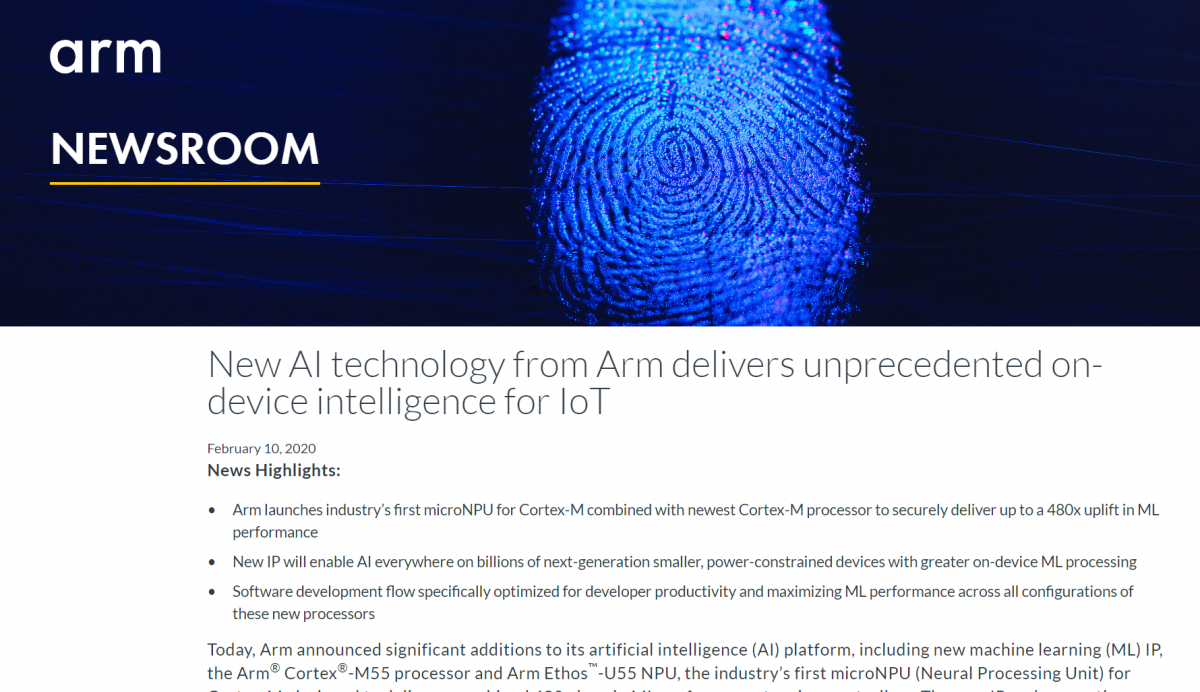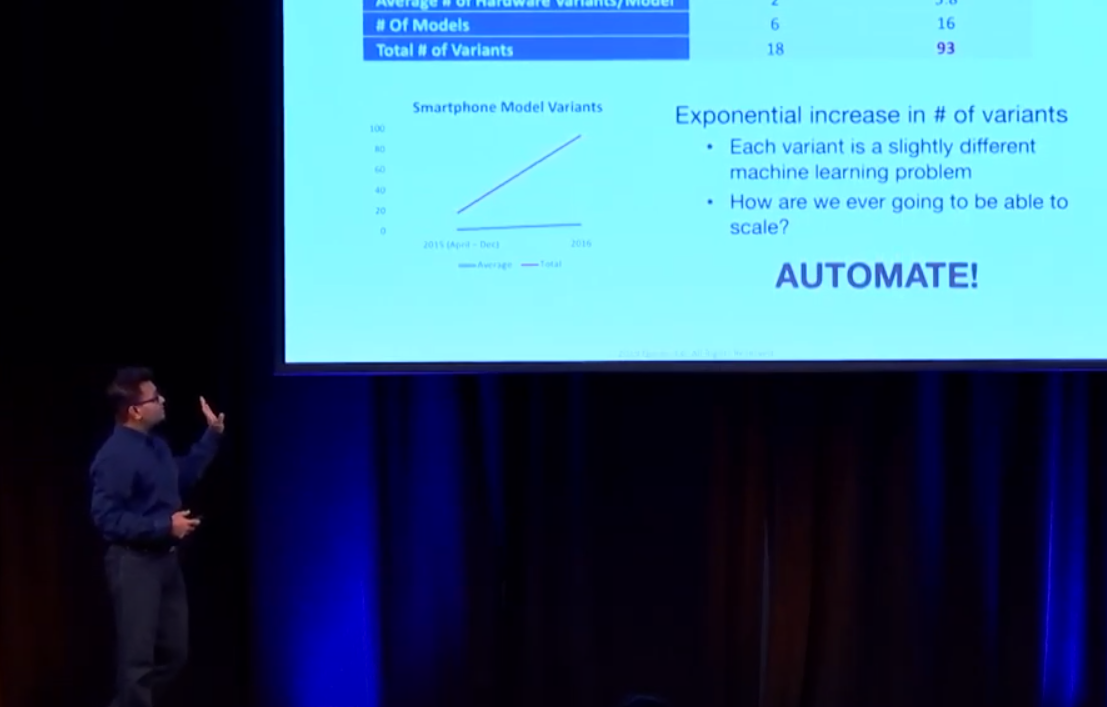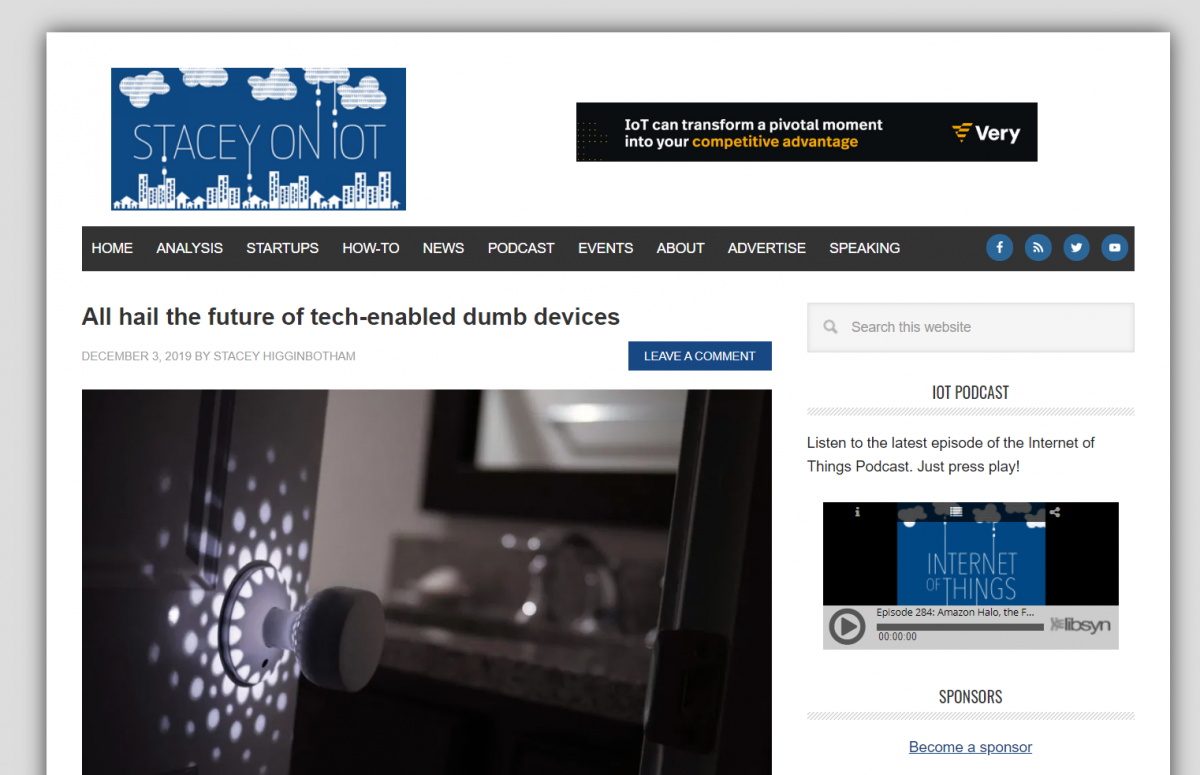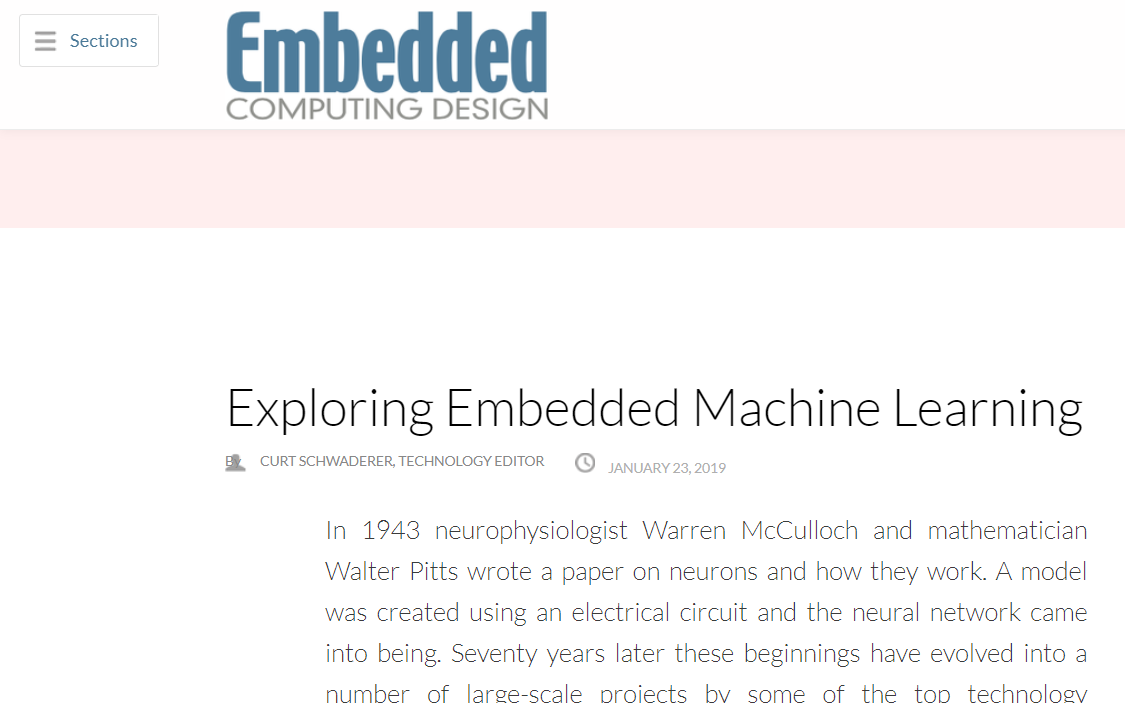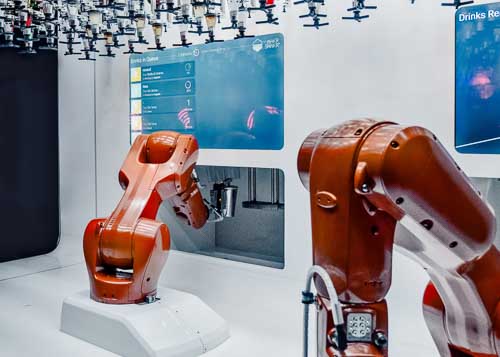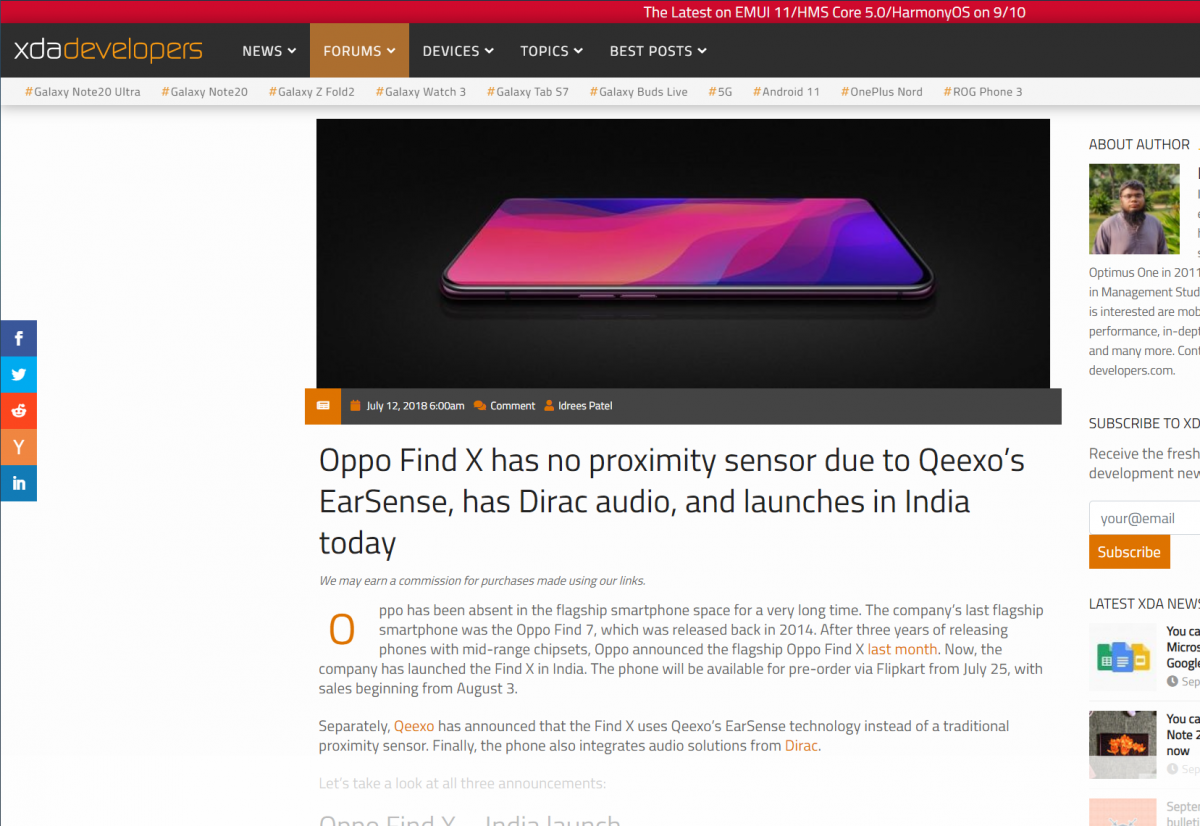Using Qeexo AutoML, companies can launch machine learning on embedded devices and begin analyzing data in a few hours
Oct 7, 2019; Mountain View–Qeexo today announces the launch of its AutoML product, a one-click, fully automated platform that allows customers to rapidly build machine learning solutions for Edge devices using sensor data. Qeexo has selected the Arm® Cortex™-M0-M4 class MCUs as the first hardware targets to be supported by Qeexo AutoML. At launch, Qeexo AutoML will support STMicroelectronics’s SensorTile.box, a compact multi-sensor module which includes the Cortex-M4 MCU and will continue to augment support for other hardware platforms.
Machine learning is moving to embedded processors on edge devices, improving privacy, latency, and availability. However, given limited computation power, memory size, and battery life, building machine learning solutions for edge devices is challenging. Achieving commercial-grade performance requires a team of difficult-to-hire machine learning engineers who devote their time to: preprocess data, extract features, select models, optimize hyperparameters, validate results, and deploy models to target. Even for experts, this is a lengthy, error prone, and repetitive process.
With its one-click, fully automated workflow, Qeexo AutoML greatly simplifies the machine-learning-solution development process and eliminates room for errors. All the complicated machine learning tasks are automated by Qeexo AutoML. Machine learning engineers can now focus their time on mission-critical R&D instead of performing tedious, repetitive steps. In addition, Qeexo AutoML eliminates the need for companies to invest in expensive, in-house machine learning teams, resulting in huge time and cost savings.
“Thousands of companies are collecting vast amounts of data at the edge. These companies want to leverage machine learning but don’t have the necessary tools or the technical staff,” said Sang Won Lee, CEO of Qeexo. “With Qeexo AutoML, companies can iterate through prototypes and projects to produce production-ready models with a fraction of the time and resources previously required. We chose to provide support first to Arm-based MCUs due to Arm’s dedication to building a world-class ecosystem and its global leadership in the edge markets.”
“Machine learning is solving complex problems that have often required significant performance,” said Dennis Laudick, vice president of Marketing, Machine Learning Group, Arm. “Qeexo’s optimizations will bring new machine learning capabilities to an even broader range of devices, and targeting Arm-based MCUs means their technology will benefit a rich ecosystem serving nearly all industries.”
“An automated machine learning tool like Qeexo AutoML extends the reach of our products while providing tremendous value to our joint customers,” said Miguel Castro, Head of Marketing for the STMicroelectronics AI Solutions Group. “Qeexo’s choice of the ST SensorTile.box evaluation kit, which embeds our advanced STM32 microcontroller, STNRG Bluetooth, and 8 sensors to be the first hardware target to support on Qeexo AutoML highlights the importance and usefulness of the module.”
Qeexo AutoML is based on the same machine learning platform that Qeexo developed as the basis for its FingerSense, EarSense, and TouchTools products, which are commercialized on over 210 million consumer devices worldwide.
About Qeexo
Qeexo is the first company to automate end-to-end machine learning for embedded Edge devices (Cortex M0-M4 class). Our one-click, fully-automated, Qeexo AutoML platform allows customers to leverage sensor data to rapidly build machine learning solutions for highly constrained environments with applications in mobile, IoT, wearables, automotive, and more.
Delivering high performance, solutions built with Qeexo AutoML are optimized to have ultra-low latency, ultra-low power consumption, and an incredibly small memory footprint. As billions of sensors collect data on every device imaginable, Qeexo can equip them with machine learning to discover knowledge, make predictions, and generate actionable insights.
Spun out of Carnegie Mellon University, Qeexo is venture-backed and headquartered in Mountain View, CA, with offices in Pittsburgh, Shanghai, and Beijing. To learn more, visit https://automl.qeexo.com.

